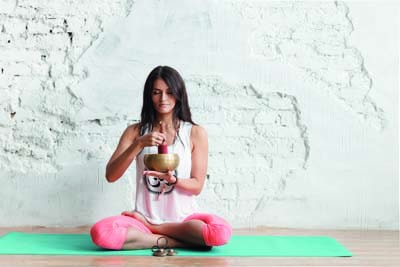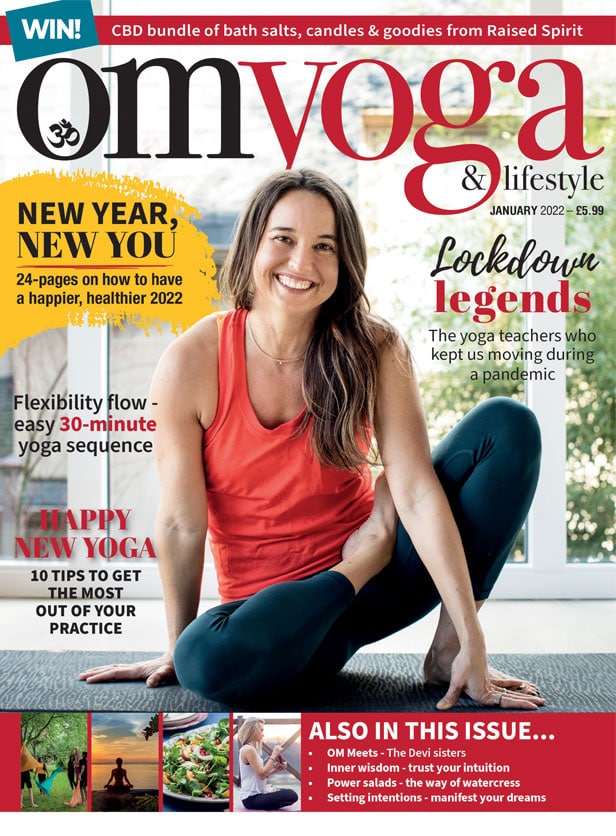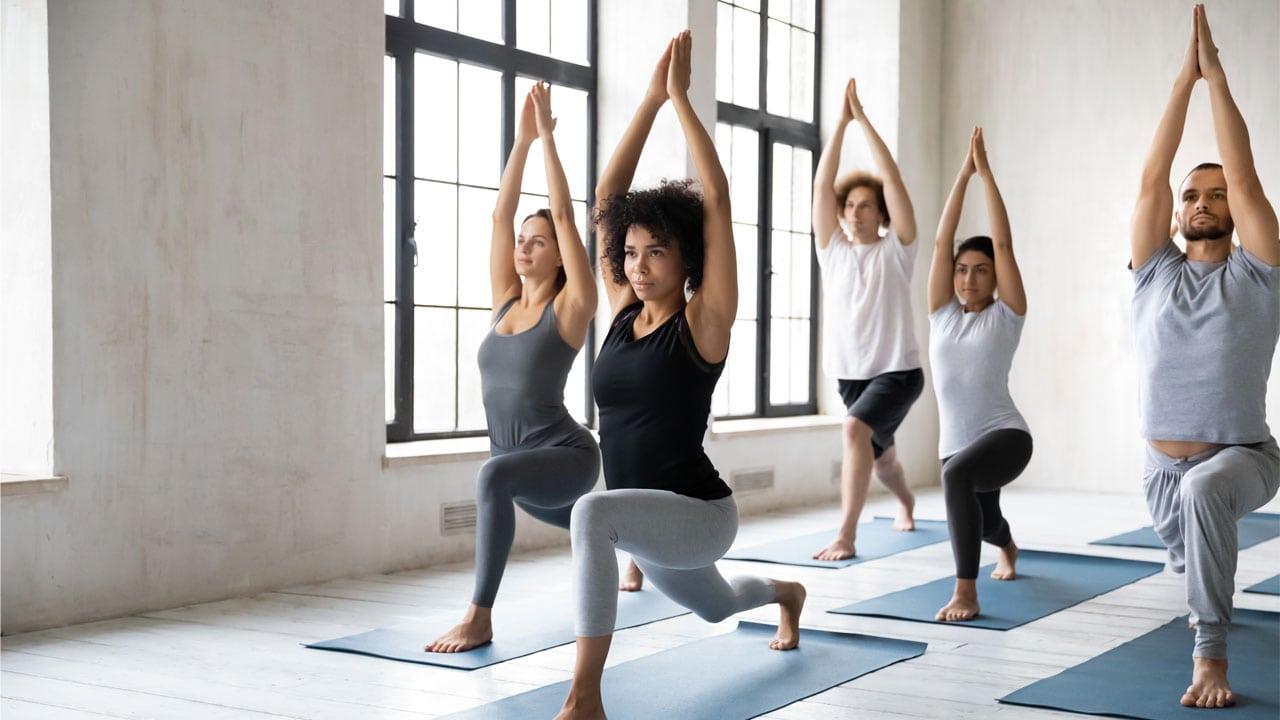
Cuing with confidence
6 vocal technique tips for yoga teachers
Your voice is a guide that sets the tone for every student in the room. Here are six vocal technique tips to raise your teaching game. By Marisa Atha
Yoga teacher training programmes cover so many fundamental aspects of yoga practice, but often neglect to address the voice as it relates to teaching. We may have a head and heart full of knowledge, but when it comes time to stand in front of a class and deliver, our words fail us.
While cuing instructions during a yoga class, the teacher’s voice can make or break the entire experience for students. A teacher’s weak, raspy, or timid delivery might invoke less intentional movement from the students; poor volume can make for poor muscle tone and engagement; and inconsistency may lead to wandering attention. Choppiness in speech patterns, side-notes, second guessing, and dropped phrases all interrupt the flow of transitions between poses.
The instructor’s energetic presence, modeling, and spoken cues draw out the quality of practice from students. No matter whether the class style is Vinyasa, Hatha, Yin, Power Flow, advanced, or beginner, the instructor serves as a guide, leading students through the experience of their practice. In terms of voice, the essentials include: a clear tone quality, proper projection, consistency, and fluidity.
The best public speakers, actors, and performers draw us in. The boundary between audience and craft vanishes, leaving only the tether of experience.
As yoga teachers, we are tapping into an ancient tradition that yokes the components of the individual - body, mind, and spirit - as well as unites practitioner to instructor, and practitioner to peers. When we chant the word ‘Om’, we call upon its nature as a universal sound, sending forth positive intention into the world. Often, at the start of class, a yoga teacher will ask students to dedicate their practice.
For outsiders looking in, from the background of aerobics classes or fitness centres, they might wonder why we dedicate an athletic practice on behalf of others. It’s because the asanas [poses] are only one aspect of the eight-limbed path. Other aspects - Dhyana [meditation], Dharana [concentration], Pranayama [breath control], Pratyahara [withdrawal of senses] - are equally important. This is why, when we find ourselves truly in the zone in a Vinyasa class, we are tapped directly into the source of the practice. We’ve aligned our breathing with the teacher’s; we are flowing in our movements, seamlessly incorporating cues into our bodies and translating them into a unifying experience.
So, words and tone matter; voice matters. Whether the instructor chooses to lead the class through spoken word alone, incorporates chanted ‘Om’ to frame the class, or plays the harmonium to guide an extended chant, the principles for using the voice remain the same.
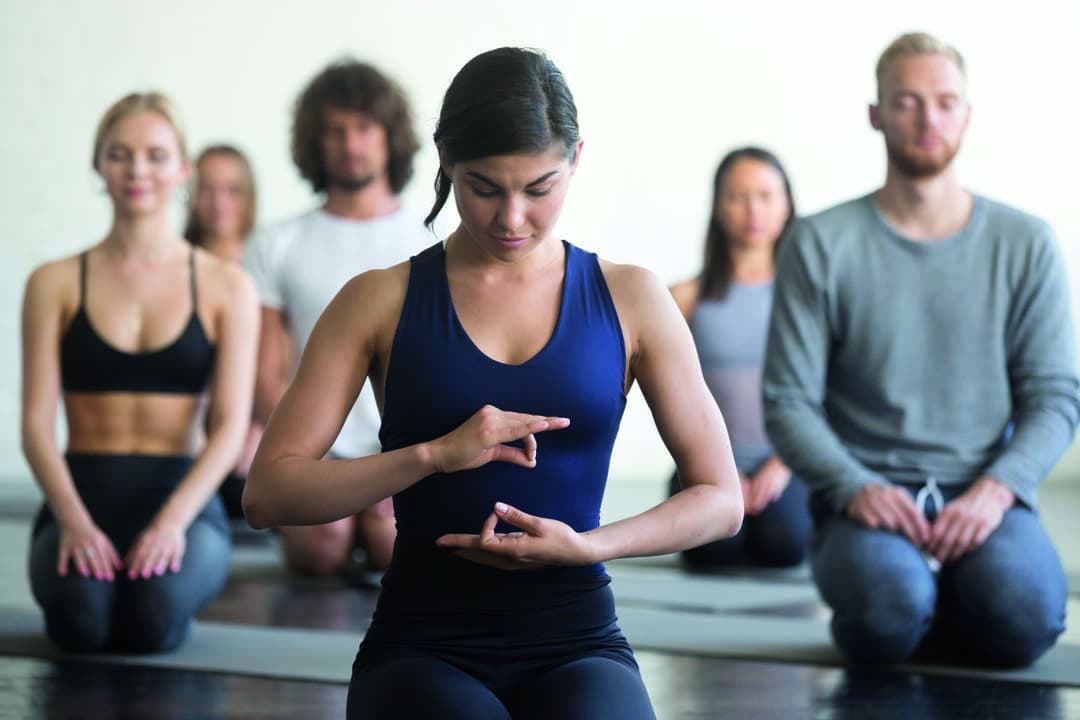
1. Align the body
This may seem a given, as yoga instructors are undoubtedly educated in body alignment principles. But there are nuances in regard to the voice that are important to consider. Similar to Tadasana [Mountain Pose], when we speak or sing, the body should be in a balanced, vertically oriented position. The back of the neck should be tall, bottom of the chin parallel to the ground, and ears centred over the shoulders. The shoulder blades should be comfortably back and down, opening the chest and ribs to expansion. The torso should balance over the hips and pelvis, with the legs supporting from below. This creates the optimum alignment to allow the breath support system to work and the vocal folds to coordinate for phonation.
As you teach, circulating through the studio to provide assists and give ongoing cues, pay attention to any muscular tension you may be feeling. Although you are radiating energy outward into the room, continue returning inward to check in with your own body. The greater foundational balance and poise in your body, the stronger your voice will feel.
2. Breathe with intention
Although the anatomical components of breathing remain the same no matter the circumstances, the primary areas of muscle engagement can differ depending on the activity.
Classical singers take in large swaths of air at a time, the intercostal muscles widely stretching the ribcage, the diaphragm fully extending downward and thereby expanding the abdominal region; as they phonate on the exhalation (sing), the collapse of the ribcage is controlled and the abdomen slowly returns to shape as the diaphragm rises. This type of breathing supports the long, legato phrases that make up the classical style. In contrast, pop singers who rely on lower, blastier sounds - known as belting - breathe in an entirely different way. Smaller sips of air suffice, and deep abdominal expansion would be more of a hindrance than a help. But no matter the genre, singers aim to breathe with an open, relaxed throat, as the vocal folds move apart to let air in, and come together in a coordinated, easeful effort to produce sound.
Breathing for yoga is a bit different. Firstly, when participating in an athletic endeavour, our core muscles are typically engaged.
If we are properly holding Warrior III, our abdominals should certainly be contracted to support the pose. Yoga tradition even includes the practice of Uddiyana bandha [upward lifting lock], when the abdominal wall is sucked up and in. Whenever the abdominals are strongly contracted, the diaphragm cannot descend as far, so the majority of expansion takes place in the ribcage as the lungs fill during inhalation. While moving through asana practice, yogis can be aware of their abdominal activity and purposefully decide whether, how much, and when to engage or release the abs to allow for lower diaphragmatic descent and deeper breaths.
Likewise, yogis can decide how much volume to produce with their Ujjayi [victorious] breath, a style that constricts the glottis - the space between the vocal folds - to produce a whispery, ocean-like sound. Ujjayi is a wonderful tool to focus the mind, placing the attention on the breath throughout practice. But trying to create too much dynamic volume with the vocal folds in this position can create unwanted tension in the voice over time.
While you are instructing, remember the role you are currently playing: teacher, not practitioner. Although you may model aspects of poses that require abdominal tension, or you may deliver some Ujjayi breaths to encourage your students to follow suit, remember to mostly breathe for instruction, not practice. Allow your ribs and belly to expand as needed, and your throat to release as you welcome a breath through relaxed vocal folds.
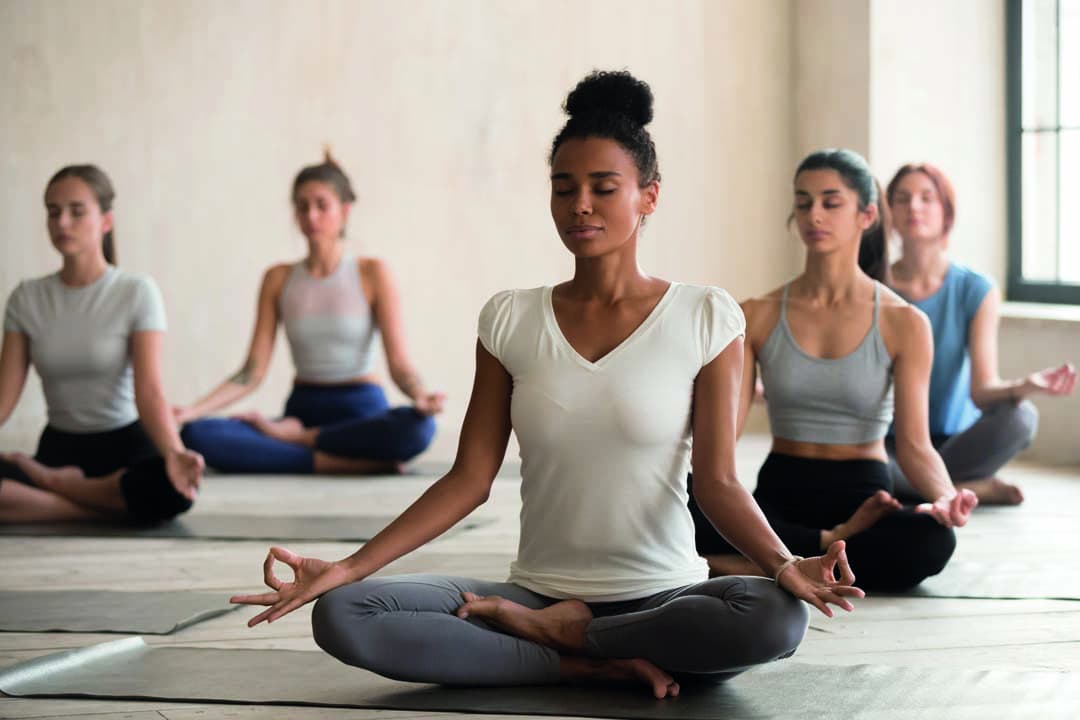
3. Project clearly and accurately
A vibrant, clear voice imparts confidence and informs the listener. Having to crane the neck to see what other people are doing because the student couldn’t hear the cue can wreak unnecessary interruption in the flow of class.
Assess the size of the room and how many people are in attendance, then project your voice enough to reach the student in the far, back corner, but not so forcefully that the person in the front row cringes. Continue to assess subtle body language and how well students are following instruction.
An optimally functioning vocal mechanism - vocal folds, intrinsic and extrinsic laryngeal muscles, and resonators - produces clear tone in speech and singing. Proper breathing supports this effort. Simply being aware of #1 and #2 above (aligning the body, managing breath support, and relaxing the throat) will do wonders to help with projection. When the voice feels supported and strong, the words can reach far and wide, even above the din of an upbeat playlist and a studio packed with moving bodies. Help your students stay with your class plan by speaking instructions loudly and clearly enough.
4. Manage the rate of speech, and excess verbiage
How fast do you typically find yourself talking when you give instructions? Are you using too many words to describe a pose?
Allow for breaks in speech, and silence to give practitioners time to internalise their experience, to listen to their own internal dialogue and then reengage in the moment.
In a Hatha, Yin, or Restorative class, consider slowing your rate of speech, and incorporating more periods of silence to encourage an atmosphere of peaceful contemplation, inner awareness, and recuperation.
In a Vinyasa or Flow class, trim unnecessary language so that your movement cues can more easily align with breath cues. Pay attention to the inhales and exhales of students, and adjust your rate of speech to match the vibe of the class - a Power Flow class might have faster directions and shorter durations of inhalation/exhalation, while a Gentle Flow class might extend poses and breathwork accordingly.
5. Select the rise and fall of pitch
This can be a difficult concept for people without a musical background - how can we choose a speaking pitch?!
Consider news reporters, who maintain an easily recognisable manner of prosody, versus Shakespearean actors who often pitch their stage speech at a higher frequency to achieve projection across a wide theatre - these actors also greatly vary their pitch so as to add to the expressiveness of character.
For yoga instructors who wish to provide a fluid, meditative flow experience for their students, the pitch set should include less variation than regular speech.
The phrases and cadences should include a somewhat predictable rhythm that, ideally, aligns with the cues to breathe and move for each transition and pose.
If your classes typically include lighthearted anecdotes and interaction between the instructor and students, then by all means, use a natural speech pattern. But when you want your students to settle and focus their attention to a pose or portion of practice, then pay attention to your voice; use your pitch pattern to shift the mood of the class.
Greater variation of pitch - highs and lows - will create a more vibrant, upbeat mood, while less pitch variation will create a more subdued, meditative mood. Be purposeful in creating the atmosphere you wish.
6. Rise above performance anxiety
Teaching a large group yoga class can call up past fears of public speaking or having to deliver presentations at school or work whilst quaking with nerves.
I’ve known some incredibly vocally talented yoga teachers who have vast knowledge of beautiful chants in Sanskrit, but as much as they wanted to include chant in their classes, they were just too scared. I’ve known other teachers who conquered their nerves enough to sing, but they would close their eyes the entire time, afraid to see disapproving faces.
Speaking and singing with confidence is like everything else: it takes purposeful practice, some guts, and lots of time to build experience. Every time you lead an ‘Om’ and hold it just a little longer than usual, you are taking a step towards vocal confidence.
Every time you lead even a short chant, you are imprinting a pathway to extend into longer chants in the future. With every Flow class, you have another opportunity to practice using your voice as a rhythmic guide that sets the tone for every student in the room.
So, trust yourself: your knowledge of alignment, breath control, and attunement to the room; and trust your voice as the instrument to share the symphony of your knowledge.
Marisa Gray Atha, RYT-200, is the owner of Three Sparrows Studio (threesparrowsstudio.com), providing private voice instruction to yoga teachers and singers and also Mama Yoga (mamayogastudio.com), which offers online classes for all mums.
